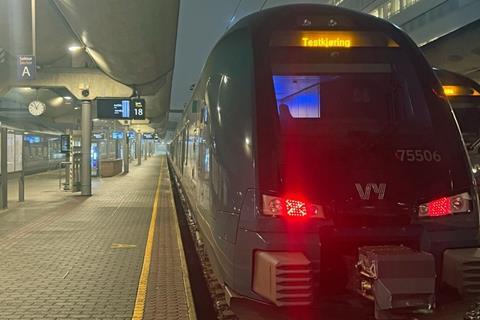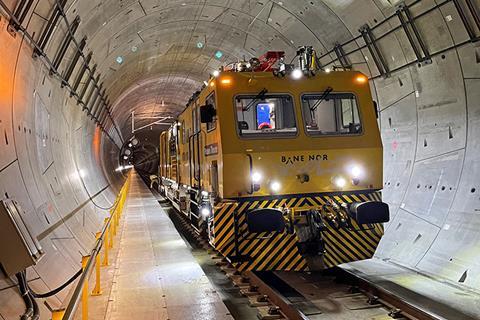
NORWAY: Trains have resumed running over the Follobanen after a 67-day break for work to enhance the electric traction supply and extensive testing of the modified equipment.
Passenger services over the 200 km/h line between Oslo and Ski began with the December 11 timetable change and the line was formally inaugurated by King Harald V the following day. However, operations had to be suspended on December 19 after a build-up of heat and smoke in the technical facilities. Faults were detected in the southern part of the 20 km Blix tunnel and at a substation near Ski.
Reporting that the problems had escalated over Christmas, Bane Nor decided on December 29 to close the tunnel until further notice. Further overheating was detected on January 11, along with smoke in the section of the Ski substation which feeds the line south of the station.

According to Bane Nor, the primary cause was salty water dripping from the tunnel roof onto an insulator, causing a short circuit in the 15 kV 16⅔ Hz traction supply. The circuit breakers correctly activated, but when power was restored the fault recurred several times. Subsequent investigations revealed quality control problems in the execution of cable joints and the end terminations of high-voltage cables, as well as a weakness in the earthing concept for return currents which subsequently had to be redesigned.
Before the line opened, Bane Nor had commissioned Norconsult to review the autotransformer feeding system adopted for the new line and ensure that the return currents would not interfere with the signalling equipment. The consultants reportedly raised concerns that the system was inadequately dimensioned to cope with the return current levels when several trains were using regenerative braking at the same time, but this had not been fully tested before the line opened.
Bane Nor has now asked PwC to evaluate the issue, mapping the sequence of events that led to the Follobanen being closed so soon after opening. Work is expected to start in mid-March and be completed by mid-June.
Following an emergency meeting with the infrastructure manager, Jernbanedirektoratet and regulator Statens Jernbanetilsyn in early January, Transport Minister Jon-Ivar Nygård announced that he would commission an external investigation into the management of the NKr36·8bn project. Bane Nor said it was planning to file a claim against the Acciona-Ghella joint venture which built the line under a turnkey contract, although CEO Gorm Frimannslund has reportedly accepted that ‘we should have made further evaluations’ after concerns were raised.
The infrastructure manager reports that it has spent more than NKr60m to address the problems, with extensive repair work and the replacement of several kilometres of high-voltage cables. More than 600 test runs have been undertaken since early February to validate the performance of the modified infrastructure, including the simultaneous operation of four multiple-trainset formations at full line speed.
Bane Nor had initially hoped that the line could reopen by the end of January, but the target date was postponed several times to allow for further testing, and it was not until March 5 that services could resume.

















